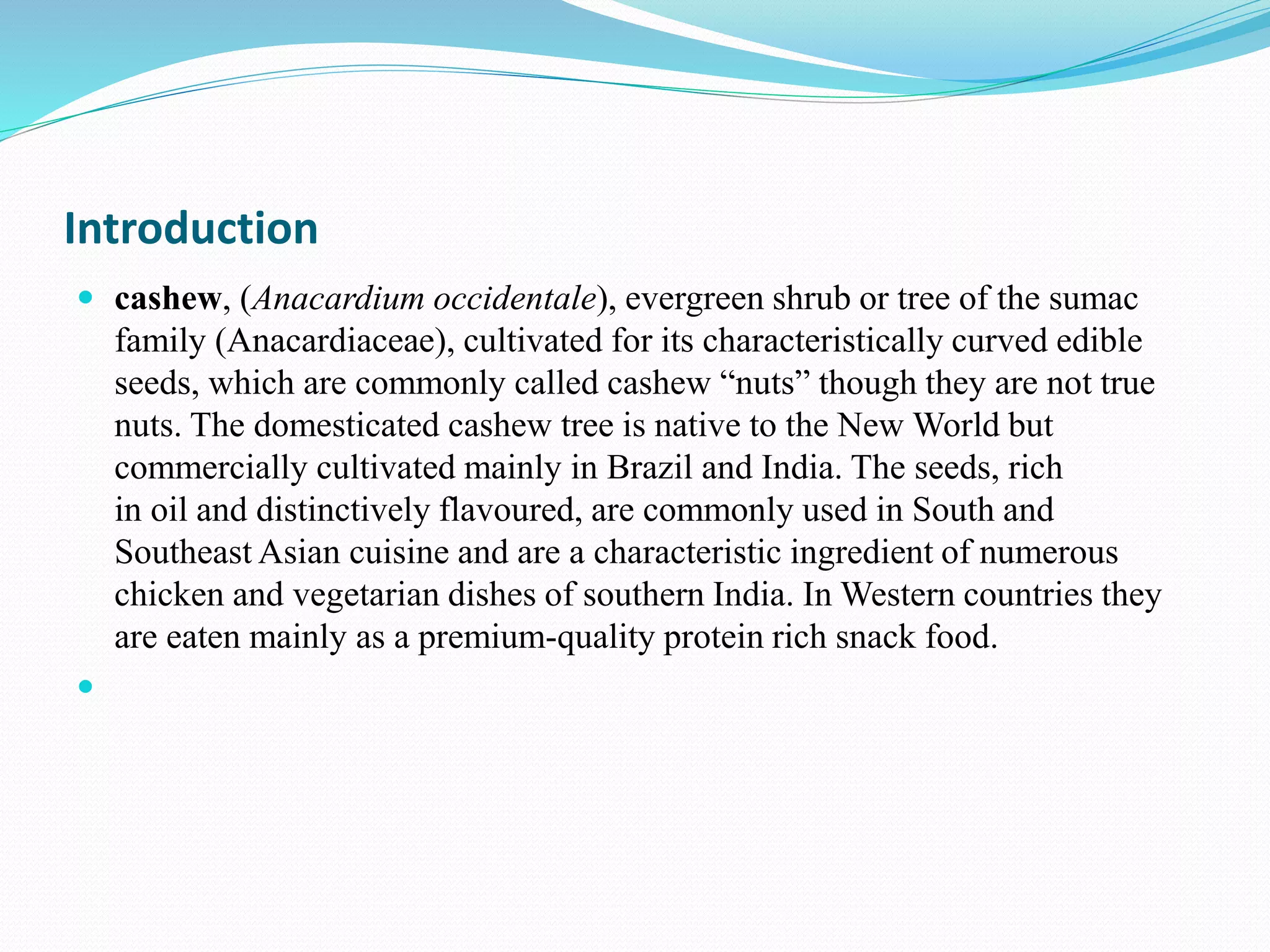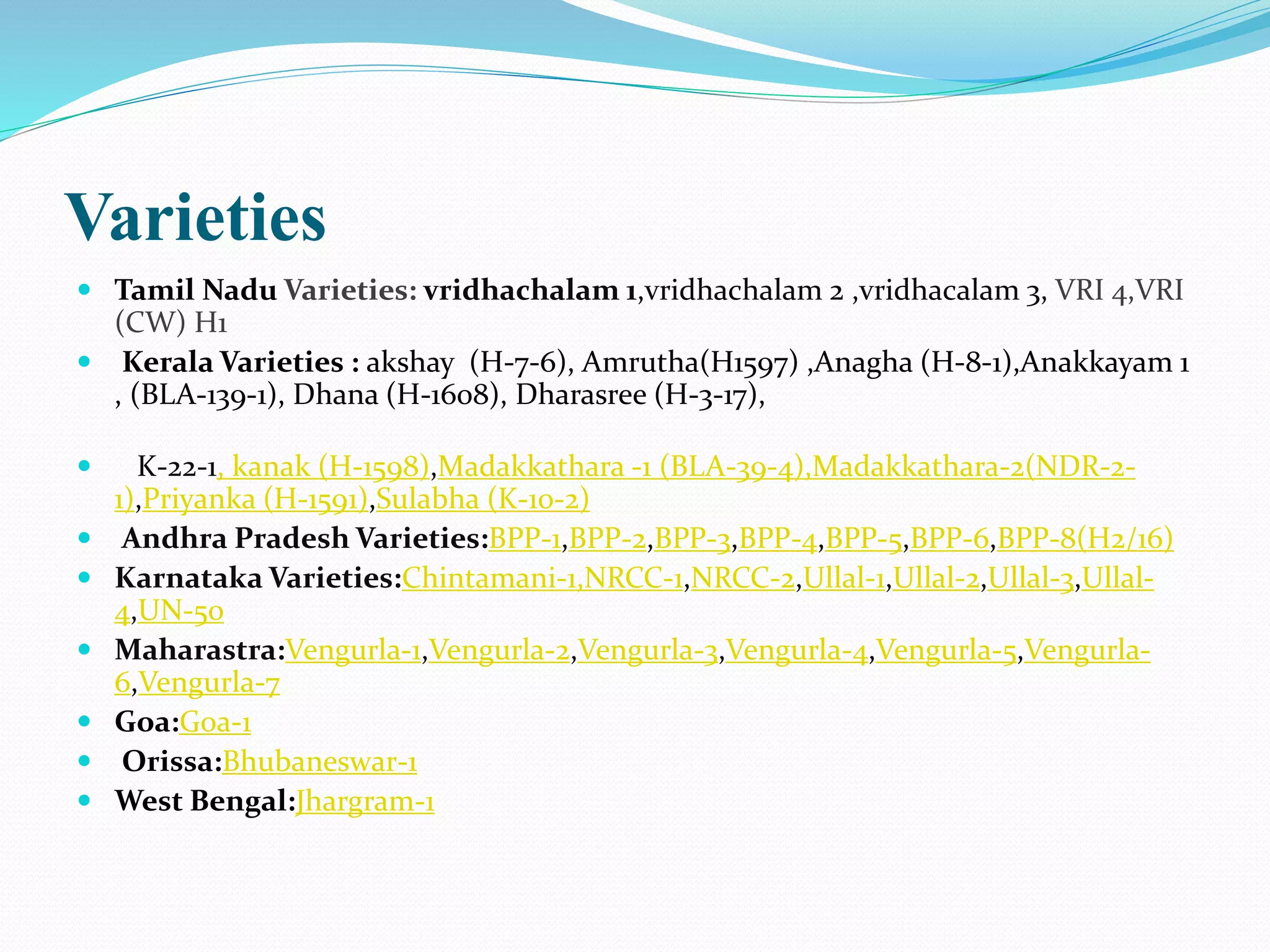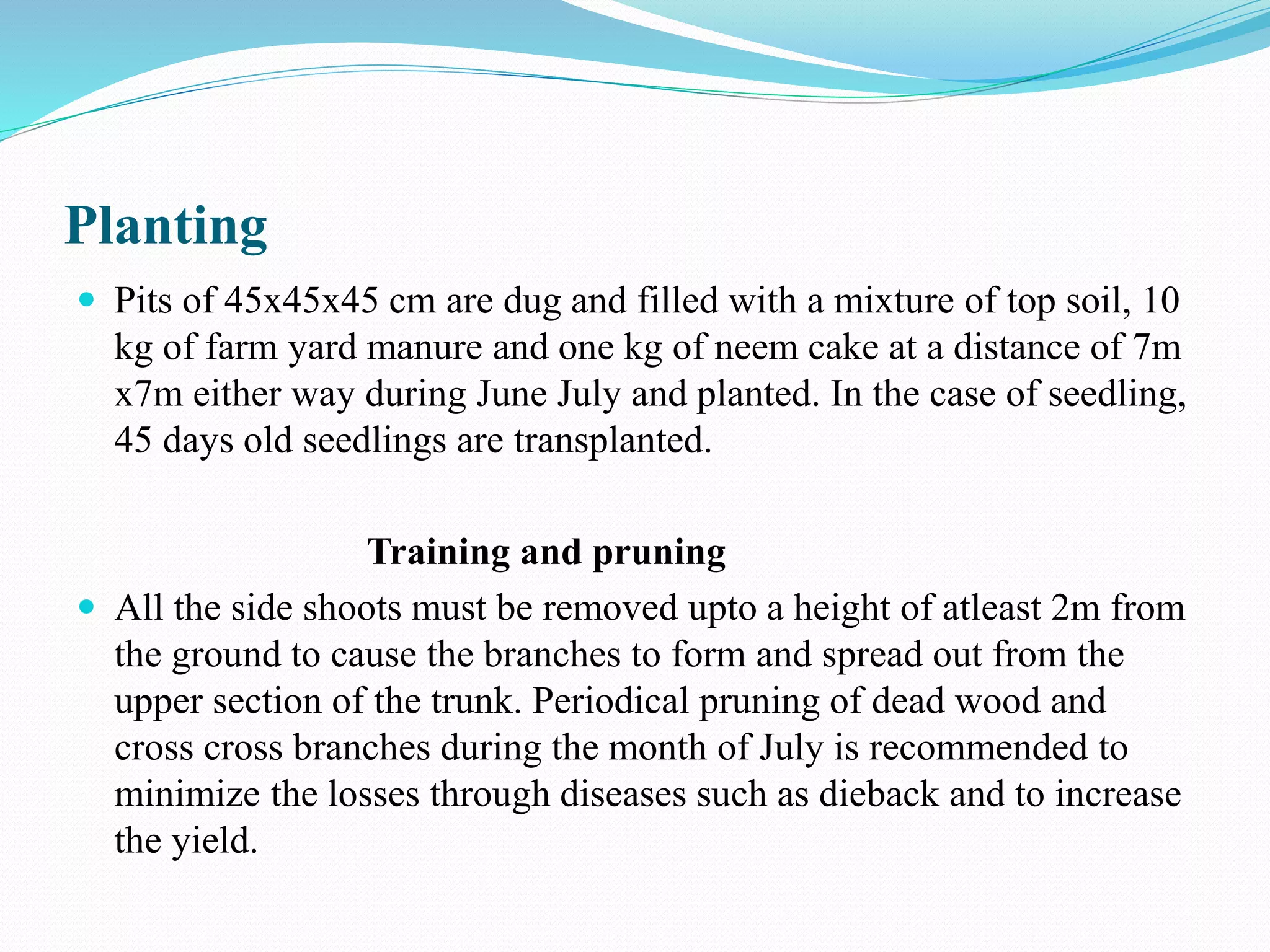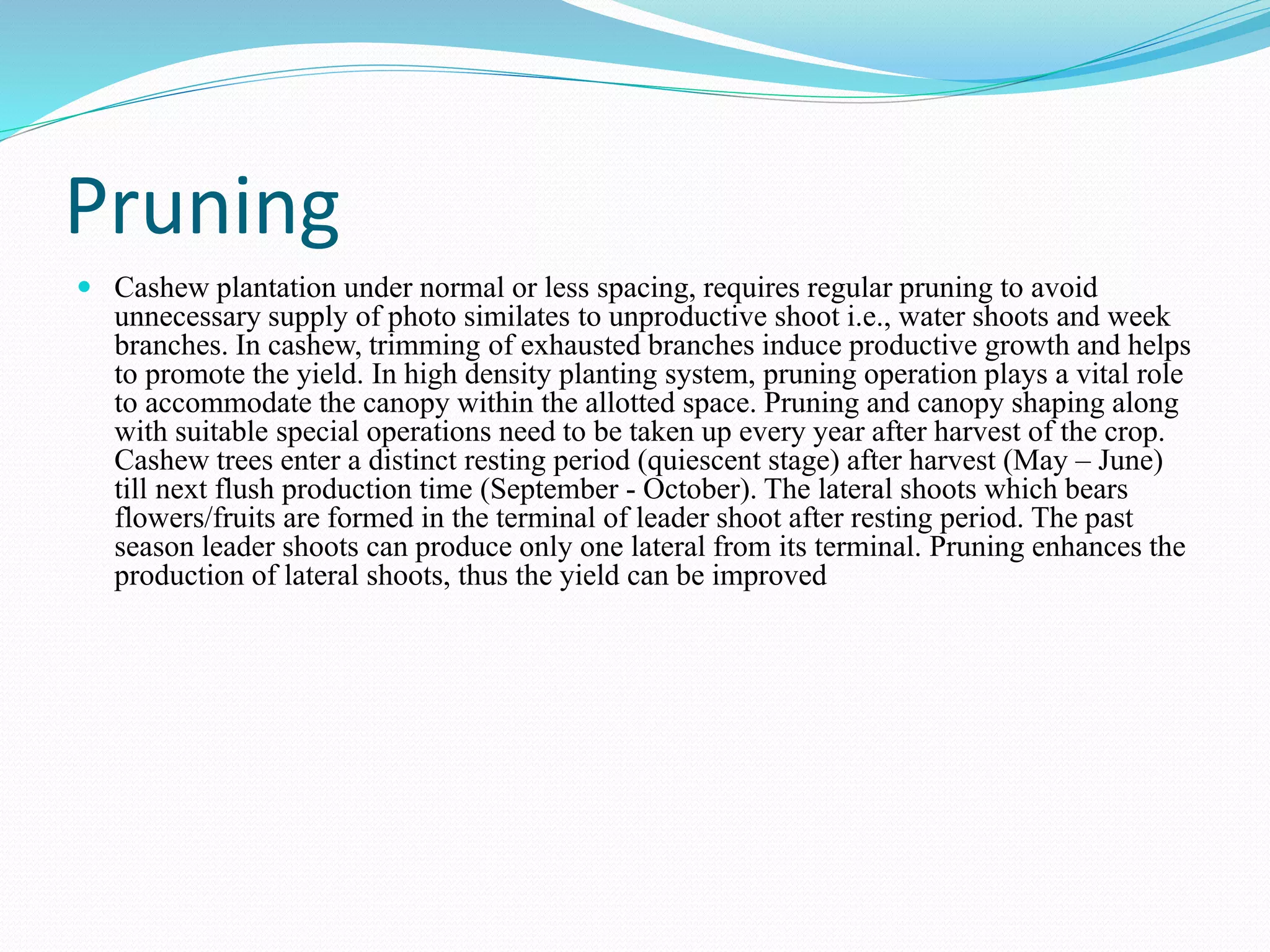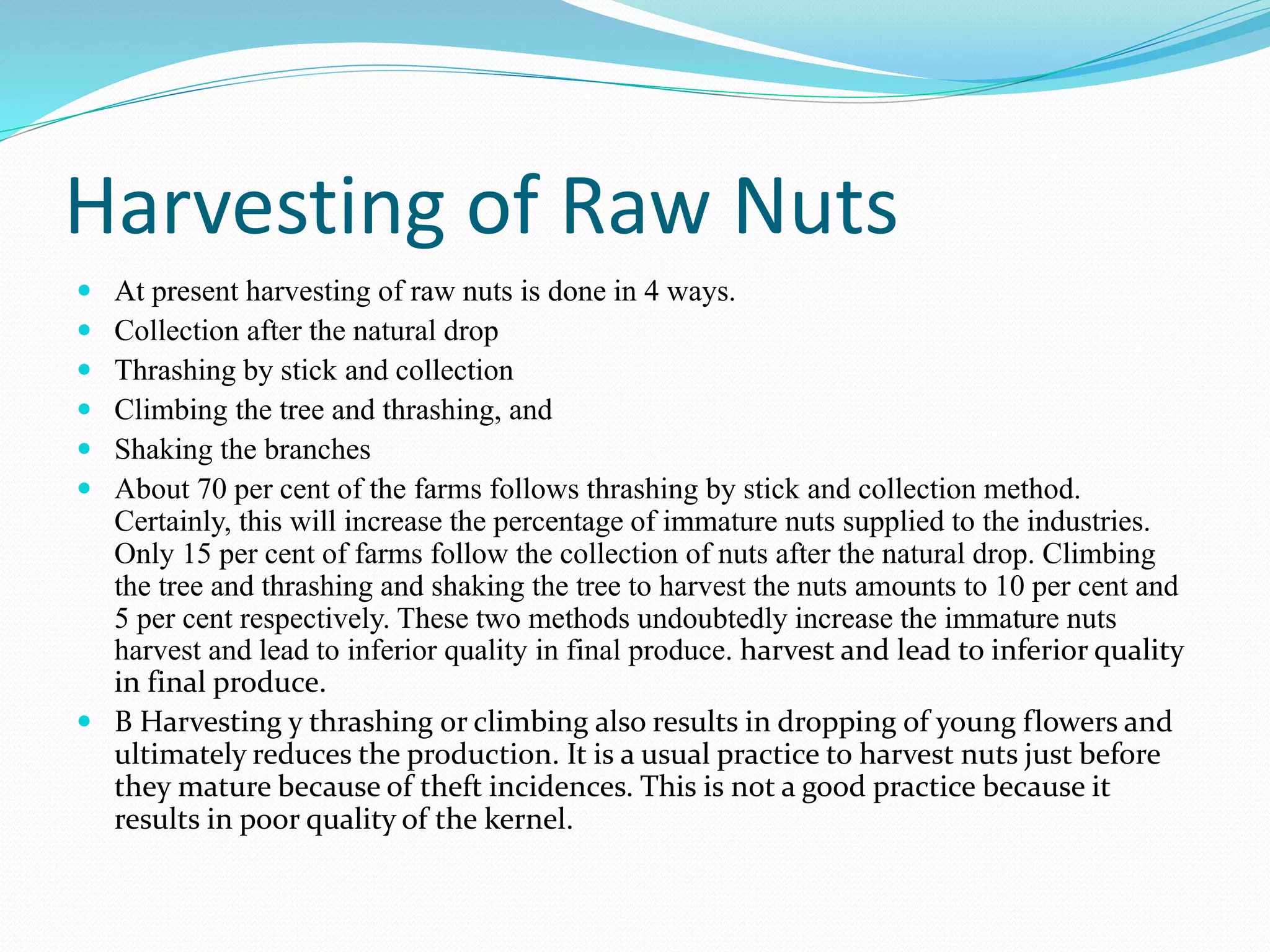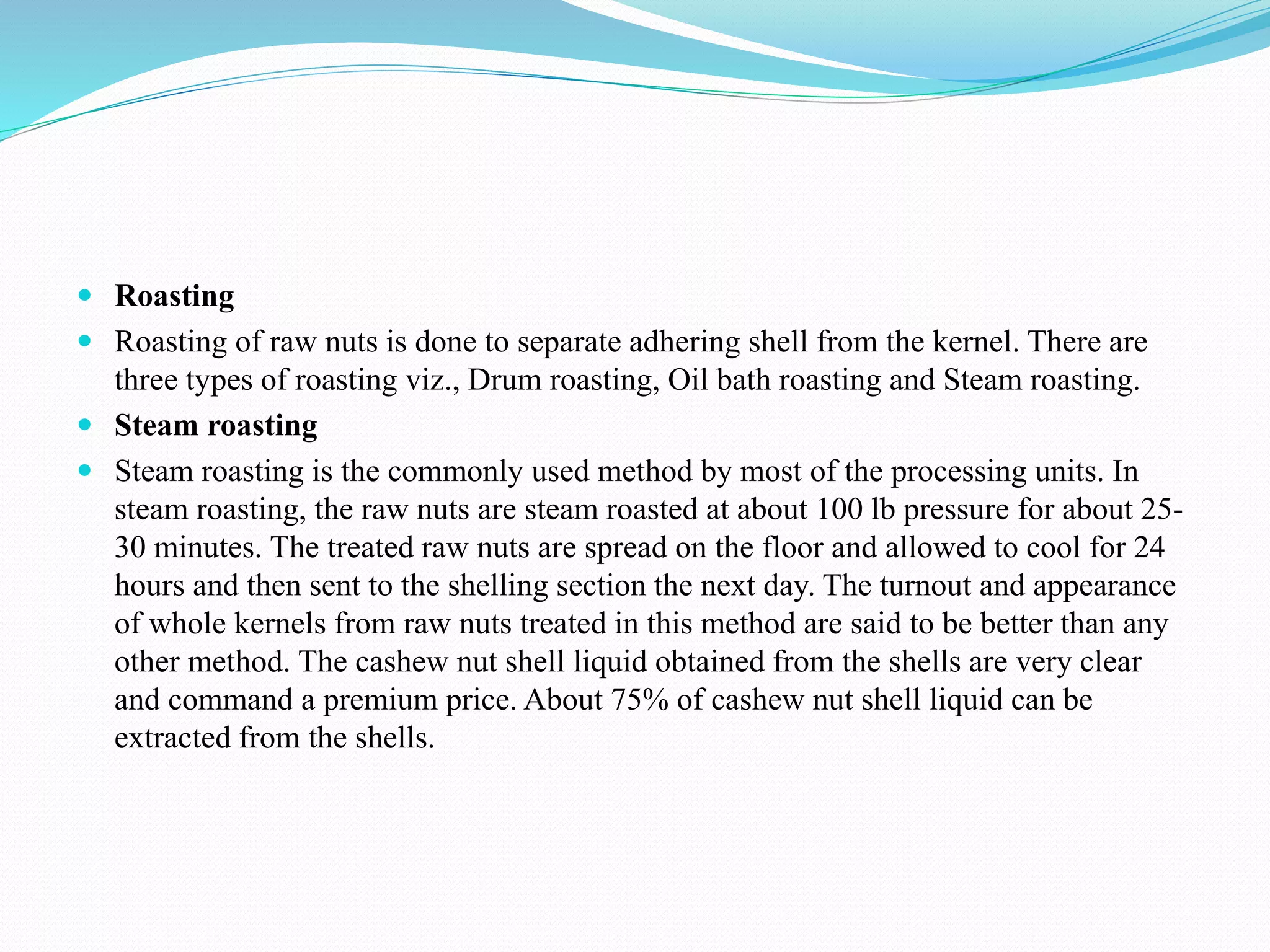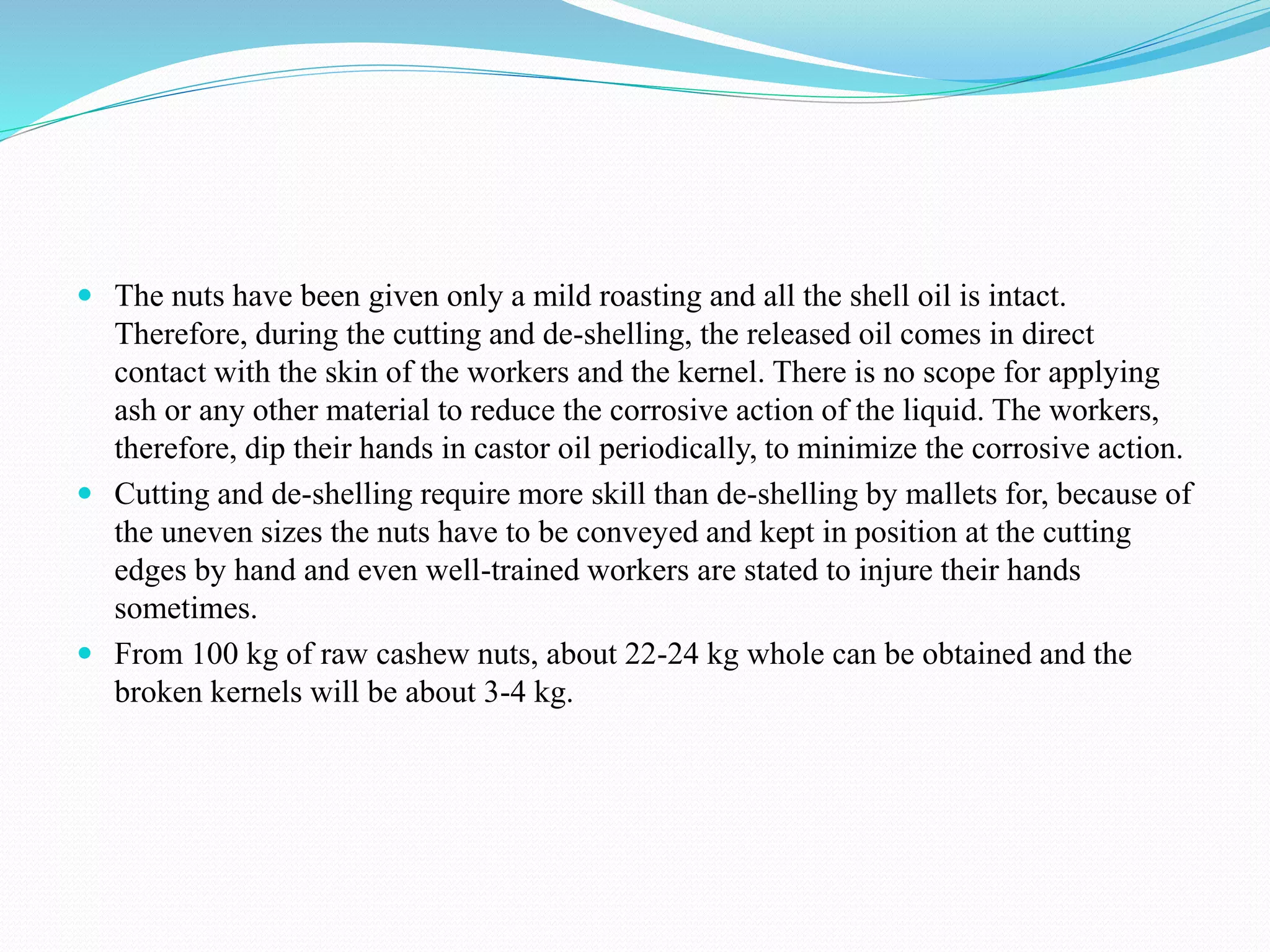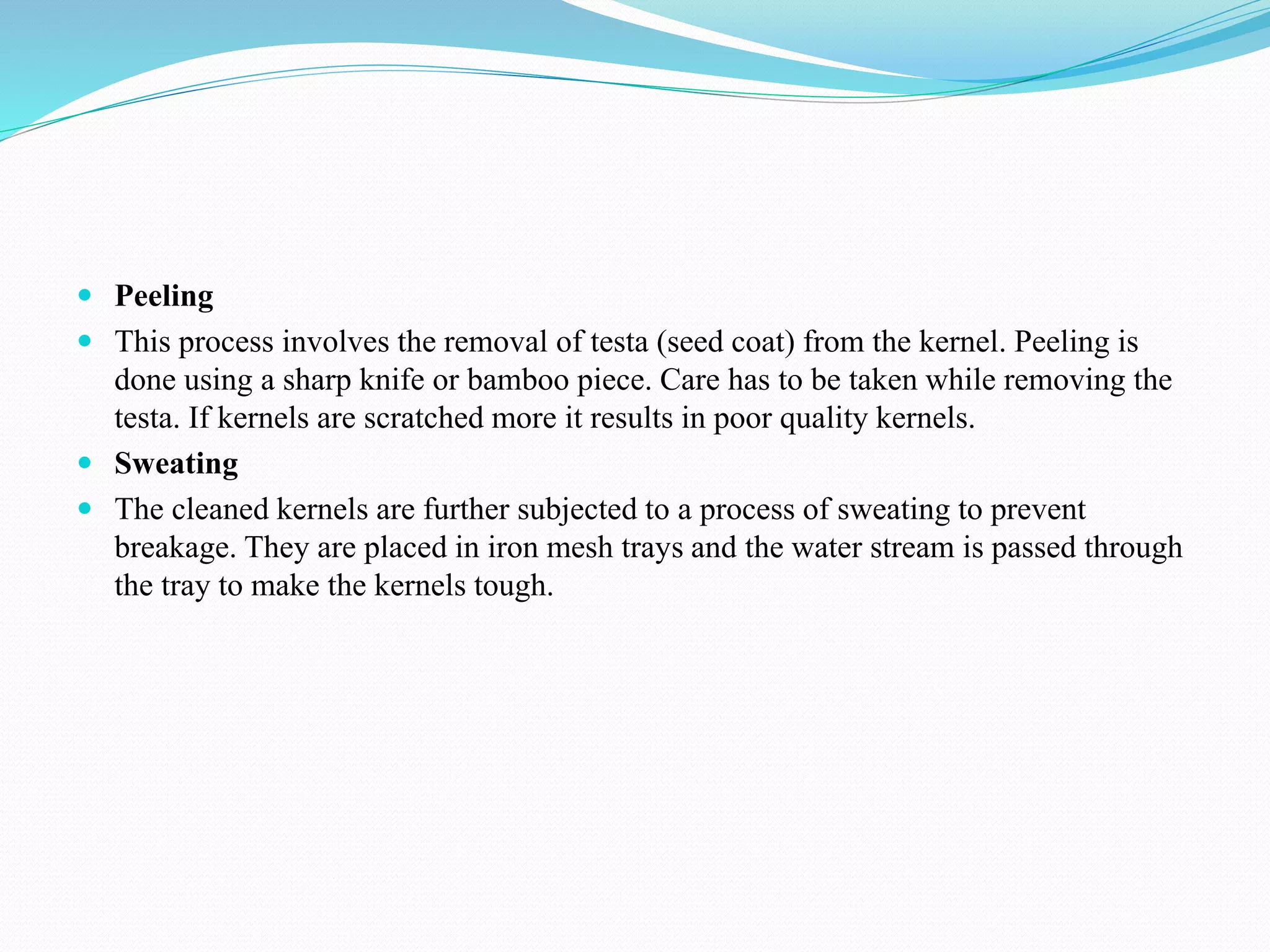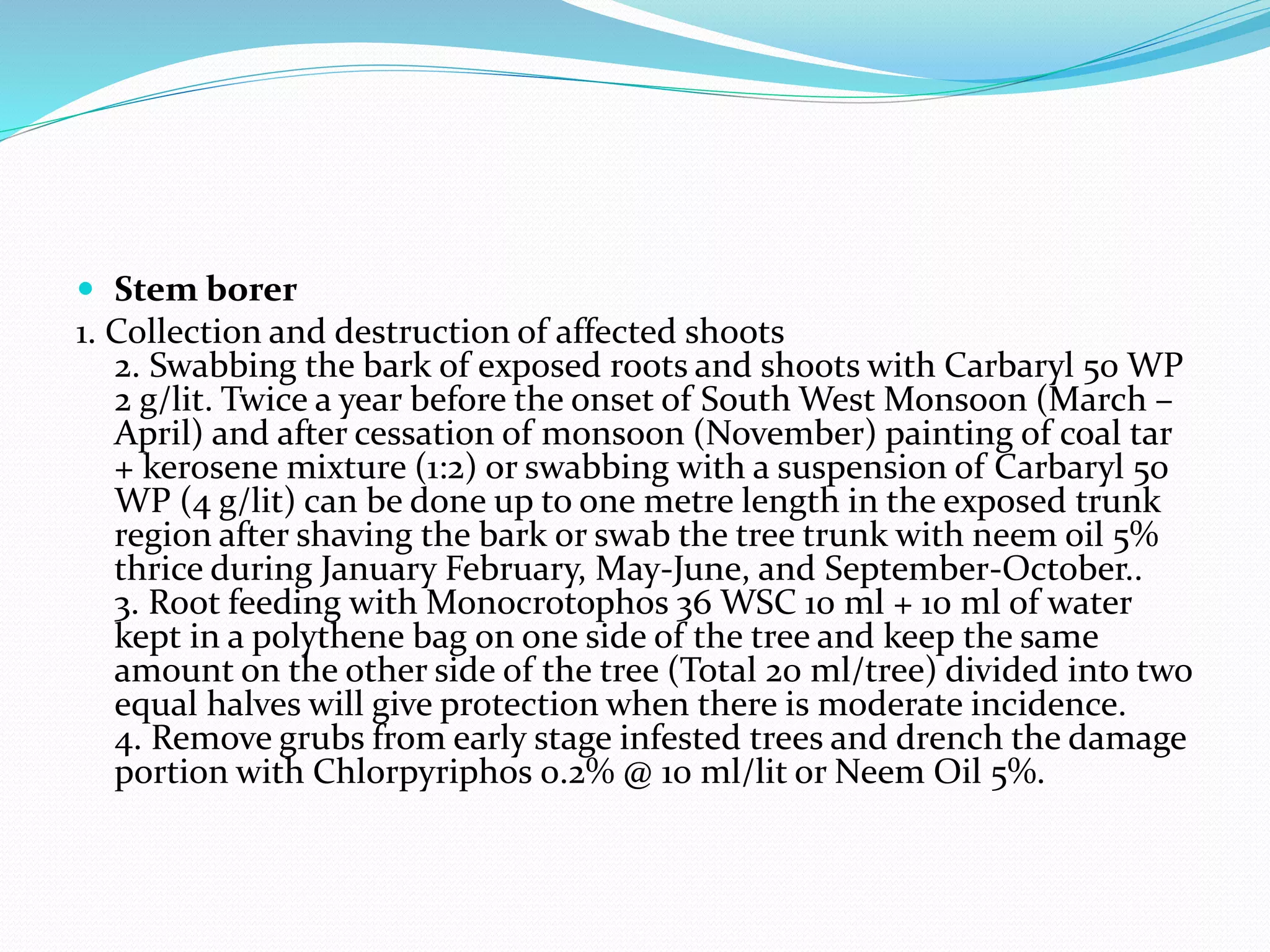This document provides an overview of cashew cultivation. It discusses the botany of cashew trees, including characteristics, varieties, soil and climate requirements. It also covers propagation methods like seed propagation and vegetative propagation through grafting. Details are given on rootstock and scion selection, grafting techniques, and maintenance of grafts. Other topics include planting, intercropping, training, disease and pest management, harvesting, grading, and post-harvest activities.



